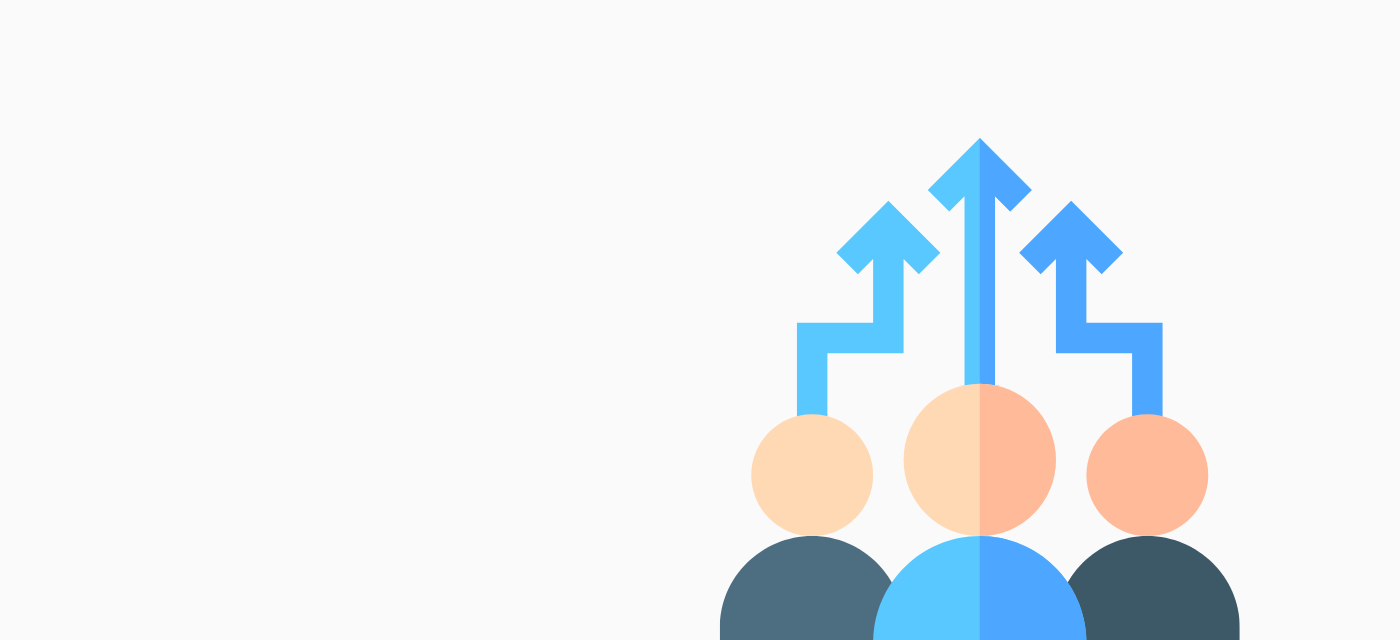Modern workplaces are flex by name and flex by nature. Progressive flexible policies are great, but they’re only one part of the bigger picture. To bring flex work to life, those policies have to be actioned.
We can do that in several ways, from how we talk about flexible work to the nuts and bolts of working and collaborating in a flex environment.
To get your teams off on the right foot, we’ve put together this guide to the daily practices and habits that create healthy flexible workspaces, drawing from the Team Work section of the Beamible Flex Playbook.
Promoting flex-forward language and behaviours
It’s no secret that language can wield great power. The words we choose, the tone we use, and the extra-linguistic cues we adopt can either support or undermine a company’s approach to flexible work.
Companies that want to reap the rewards of flexibility promote inclusive, flex-forward language and discourage non-inclusive language that brings the team down or singles out individual members.
Let’s take a look at the difference:
Inclusive flex language looks like…
- What’s your work pattern?
- What is everyone’s capacity to work on this project?
- How can we best work together on different schedules?
- I thought this was your non-working day, is your workload ok?
Non-inclusive flex language looks like…
- Leaving early again? (said to a colleague who started at 7 am and is leaving at 3 pm)
- Talking about colleagues “working” from home while using air quotes
- Sally might not be helpful on this project, doesn’t she only work part-time?
- I just work part-time or I only work part-time
Much like the linguistic strategies we choose, our workplace behaviours (which aren’t always conscious) can impact how flexible work is viewed within an organisation, be it positively or negatively.
Supportive behaviours are those that champion the company’s flexibility goals, ultimately helping to create a culture where flex becomes an integral part of the workplace.
Here are a few examples:
Supportive flex behaviour looks like…
- Keeping an open mind about flexible work and experimenting with different strategies
- Scheduling team meetings on days when everyone is working and at times when everyone is available. For example, your company’s ‘core hours’ could be 10 am to 2 pm
- Respecting colleagues’ preferred work hours, for instance, by only asking team members to attend meetings outside these hours in unusual circumstances and double-checking that this doesn’t cause undue stress
- Roadmapping team objectives and deadlines in advance so no one is blindsided by sudden responsibilities
Unsupportive flex behaviour looks like…
- Gatekeeping flexible work options, reserving flexibility for some team members only or viewing flexibility as something that must be earned
- Scheduling team meetings at a time or date that excludes some team members
- Not respecting colleagues’ preferred working hours by asking them to complete tasks outside of these hours or by communicating for work reasons on days off
- Creating avoidable high-stress periods by making team members work on last-minute, “urgent” deadlines
Communicating through the right channels (at the right times)
Good communication is a cornerstone of productive flex work. With increasingly dispersed workforces, we’re relying on technology to facilitate this communication more than ever before.
It can be a double-edged sword. Too much communication, too many potential channels, and messages sent at all times can contribute to an always-on culture.
The antithesis of respectful flex work, being ‘always on’ encroaches on people’s home lives, contributes to burnout, and affects productivity. Little wonder many countries have introduced right-to-disconnect laws.
Poor communication strategies may also lead to the neverending email vortex or constant meetings (and the dreaded Zoom fatigue) that keep people from more pressing tasks.
Being explicit about how you communicate is the best way to avoid these situations, while still using tech to boost productivity and enable synchronous and asynchronous work.
Organisations can have a policy that sets out the hows, wheres, and whens of communication. This policy might include:
Choosing the right tech for the right things
- Internal messaging (instant messages, Slack, et cetera) – Best reserved for quick questions or updates, with the added bonus that people not currently working can view the discussions later. (Check out Slack’s new delayed message feature)
- Emails – Perfect for client communications or sensitive discussions that don’t concern the whole team. Use the delay send function to avoid out-of-hours notifications. Emails are great for providing one-way information.
- Phone calls – Can be the perfect way to quickly address a matter, and a way to avoid numerous emails. A phone call is particularly helpful when making decisions one-to-one.
- Video calls – For necessary meetings and when avoiding miscommunications is important. This is a good option when decisions need to be made cross several stakeholders.
- Text messages – For urgent matters only, for example, during non-work hours when team members aren’t expected to be online. Texts should be used infrequently if at all.
Questions for teams to discuss
- How can we signal to our colleagues when we’re online and working?
- Is having our cameras on the default for video calls or can people decide for themselves?
- How can we use delay send on emails to avoid disturbing colleagues?
- How can we use out-of-office notifications to let people know we’re not working and who to contact instead?
- How can we use email signatures to signal our commitment to flex? For example, our signatures might include things like “I work flexibly and send emails outside of typical business hours. Please know an immediate response is not expected.”
Communicating with customers
Let clients and stakeholders know from the outset that your team works flexibly (use your email signatures to let other people know too) and be transparent about the team’s work patterns.
Flexible work is now considered normal, so there’s little fear that clients or stakeholders will be taken aback or discouraged. In fact, 2021 WEGA data shows that the majority of employers have a formal flexible work policy or strategy in place now.
Clients rarely expect immediate replies to emails anyway, but being open about how and when team members work means that client expectations are realistic. And who knows, you might even inspire other companies to take on the flex mantle too.
Working together in a way that works for everyone
We’ve discussed how we talk about and behave towards flex, and how we communicate efficiently in today’s workplaces, but what about when we’re doing the actual work?
High-performing flexible teams have several things in common: they designate time periods for collaboration, hold meetings when necessary (not just for the sake of having a meeting), and have set core hours.
Core hours
You can think of core hours as somewhat like the meat of each working day. We find core hours tend to be between 10 am and 2 pm, Monday through Friday but every organisation will have different needs based on the nature of their work.
Having set core hours means the opportunity for synchronous work if needed, as well as the opportunity to schedule meetings that are inclusive of all team members. All team meetings, planning, and communications should occur within core hours. It’s also a great time for collaboration.
Collaboration times
The benefits of collaboration are well-known: people feel heard and valued, it can spark innovation, lead to better problem-solving and much more. You can have set collaboration times, for example, for workshops or brainstorming sessions, or schedule these well in advance as needed.
Remember to consider colleagues’ different work patterns or schedules and to think about the best ways to collaborate when some people (or the whole team) are working remotely.
Focus time
We’ve lauded the ability to multi-task for a long time, but research suggests that trying to do too many things at once can actually hinder productivity. Larry Rosen, professor emeritus of psychology at California State University, notes that minimising interruptions is one of the best ways to enhance productivity.
Introduce the concept of focus time and allow people to schedule periods of time when they will work uninterrupted. Team members should respect each other’s focus time and avoid sending IMs or emails during these periods.
Meetings
There’s a wealth of evidence suggesting that when teams work flexibly, they’re more efficient with their time, for example, 43% of respondents to a Gartner study said flexibility helped them achieve greater productivity.
You don’t want to interfere with this productivity by prioritising meetings that aren’t strictly necessary, or that run for too long. Reducing the time spent in meetings means people have more time for high-value, pressing work.
Consider shortening meetings, reviewing who needs to join and who doesn’t need to be there, and sending a detailed agenda with the objectives clearly outlined beforehand.
Making flex actionable
Healthy flexible work environments keep the practices we’ve outlined above at the fore. They know that doing flex is more than just talking about it, it’s taking the little steps each day that reinforce and support the company’s flexibility goals.
And once these little steps become habits, teams are well on their way to high-performance flexible work.
Another way to ensure flex is working well for everyone is to choose the right technologies. You want visibility, accountability, and insights into work processes while team members want autonomy and to be trusted with their responsibilities.
The Beamible platform can help with both. Try us for free today or reach out and chat with a member of our friendly team about how we can help you build healthy habits.





